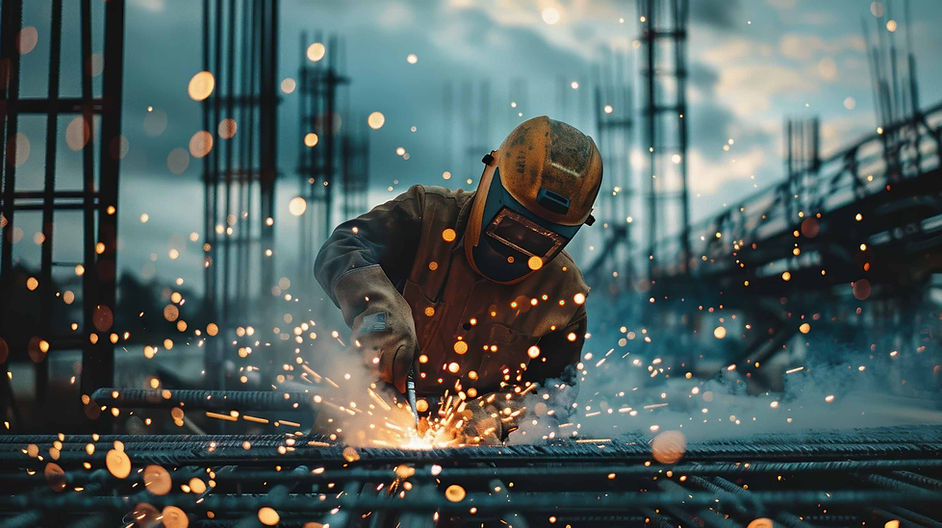
Personal protective
equipment in production area
Safety always starts with you, so you must be aware of your actions to ensure that no one is put in danger.


Safety helmet
A safety helmet must always be worn:
-
When others are working above you, or where there is a risk of falling objects or other causes of head injuries.
-
When working in confined spaces where there is a risk of hitting your head against sharp, pointed, or otherwise dangerous objects.
-
During rigging and crane work.
-
On construction sites with signage that requires helmet use.

Hearing protection
Noise can be harmful to your hearing. Employers must provide hearing protection, and the Working Environment Authority recommends that employees use hearing protection if the noise level exceeds 80 dB(A), if peak values exceed 130 dB(C), or if the noise exposure is otherwise harmful or annoying. The noise exposure under the hearing protection must not exceed 85 dB(A) under any circumstances, and the peak value must not exceed 137 dB(C).
Employers must provide hearing protection for employees if the noise level exceeds 80 dB(A), if the peak values exceed 135 dB(C), or if the noise is otherwise harmful or highly annoying. This may be the case if short-term work is performed under very noisy conditions.
Hearing protection must be used by everyone working in areas where the noise level exceeds 85 dB(A). It is recommended that hearing protection be used for noise levels between 80 and 85 dB(A).
Hearing protection must always be used when an individual is bothered by the strength or tone of the noise.
Hearing protection is provided for all employees.

Protective glasses
Eye protection must be used when the type of work or work situation can damage or otherwise affect the eyes.
This includes both short-term irritations and long-term or permanent damage. The choice of eye protection depends on the type of work being performed, the lighting, and the possible risks to the eyes.
Safety glasses or face shields must always be used when:
-
Grinding and chiseling.
-
Cleaning with compressed air.
-
Welding.
-
Being in dusty environments.
-
Handling chemicals.
-
Using angle grinders and reciprocating saws.
-
Cutting with high-speed tools.
Persons who are near these work operations must also protect their eyes.

Flame resistant clothing
Always wear full cover, fire resistant and antistatic clothing. The coverall is always closed / zipped up.

Protective gloves
The skin can be exposed to dangerous tools, machines, and chemicals.
This mainly applies to the hands, but also to other exposed skin surfaces such as forearms and the face.
The skin can be protected by using: Special creams and gloves.
However, skin protection does not end when work hours are over. Using hand cleaner will dissolve oil, paint, and other substances that are difficult to remove without damaging the skin's natural moisture. To ensure complete protection, one must thoroughly wash the skin with soap and water and then treat it with a moisturizer. The only satisfactory protection against mechanical injuries is gloves.
When working with chemical products, refer to the workplace instructions for the type of gloves to be used.

Protective Footwear
Always wear protective footwear.